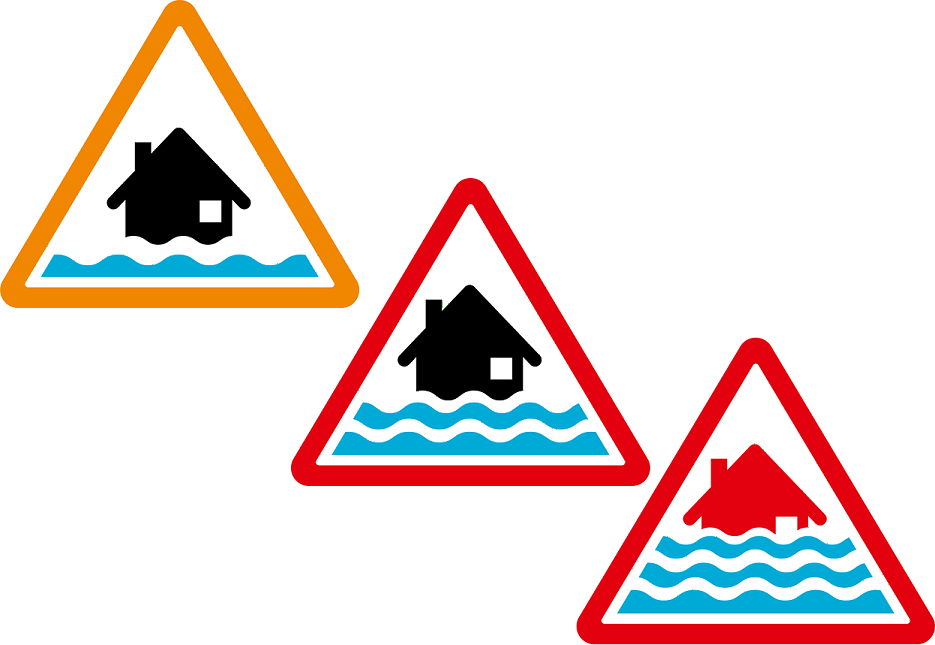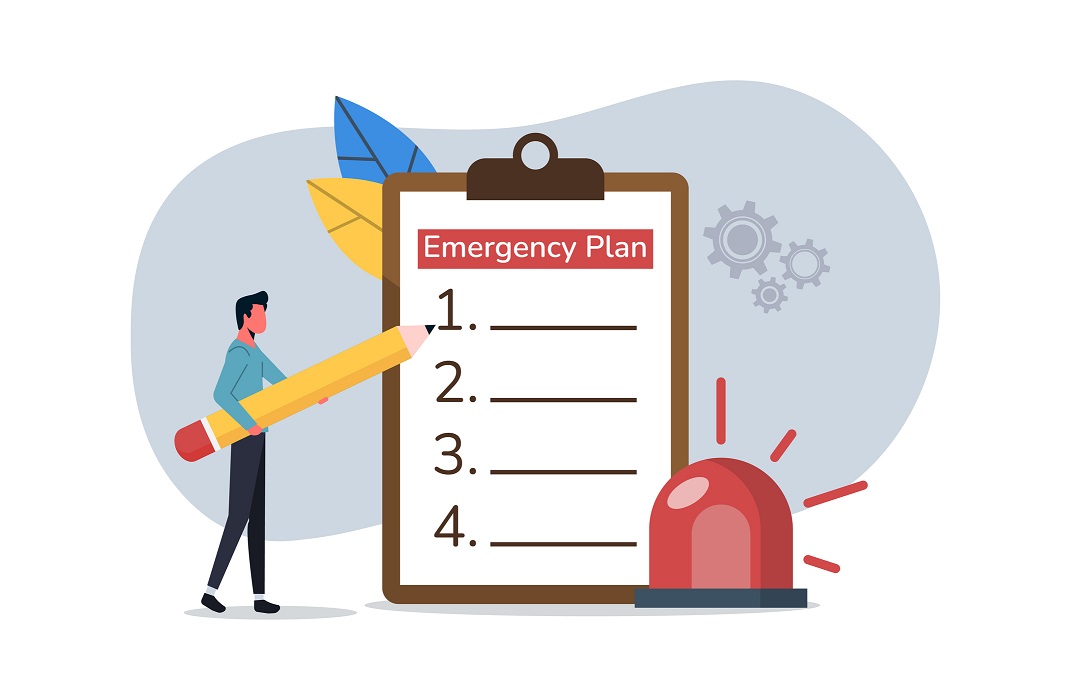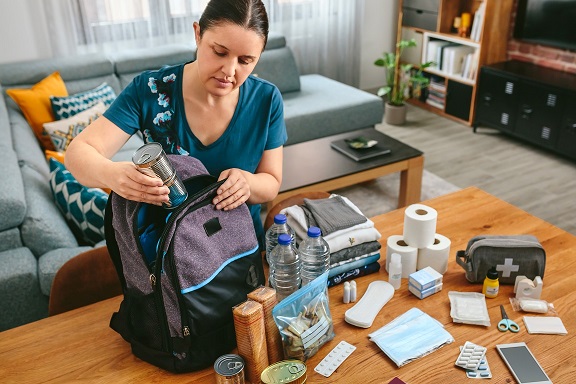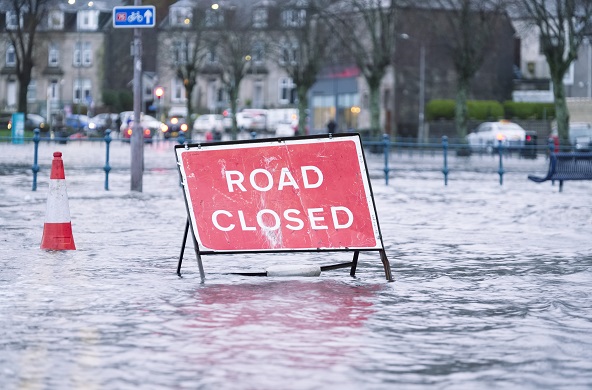Resident
The Environment Agency provides information on present flood alerts and warnings, as well as current river, sea, groundwater, and rainfall levels for around 3,500 monitoring stations, predominantly located along main rivers and the coast.
If you live in an area that is at risk of flooding, it is beneficial to sign up for flood warnings. More information on this, and what each warning or alert means, can be found on the Flood alerts and warnings page.
The current flood alerts and warnings for Staffordshire and the Black Country are also available on the Homepage. You can also access up to date information on warnings and alerts on the Check for Flooding service.

Having a plan that details what you need to do in the event of a flood, with key contact information, is a useful tool if you receive a flood alert. In addition to having an online copy, it is beneficial to keep a physical copy somewhere in your home in case you lose power and can’t access electronic devices.
In order to get the most out of your flood action plan you should:
- Make sure all members of your household know where it can be found.
- Regularly check that the information is up to date.
- Following a flood, update your flood action plan to include any new information that will be beneficial for future flood events.

You may like to store your flood action plan in a dedicated flood pack. This pack can act as a ‘grab bag’ of information and supplies that you may need in case of a flood. If a flood event occurs, you can retrieve your flood pack or ‘grab bag’ and leave quickly.
Some items that you should have in your flood pack include:
- Your flood plan
- Important documents (such as insurance details)
- Electricals and mobile devices
- Cash and credit/debit cards
- Medication, and repeat prescription forms
- Torch and radio
- Batteries
- Non-perishable food items (enough for each household member for 3 days)
- Bottled water (enough for each household member for 3 days)
- Toiletries
- Waterproof clothing
- First aid kit
- Items for infants and babies such as nappies, milk, baby food, wipes etc. (enough for 3 days)
This is not a comprehensive list but is a good starting point for assembling your own flood pack.
You should regularly check your flood pack to ensure that food, water and medication has not gone out of date. Following a flood, re-fill the flood pack and add any other resources that you feel would have benefited you.

If flooding is expected, there are actions that you can take. This includes:
- Moving people, pets, your valuables, flood pack, sentimental items, electrical equipment and furniture upstairs, or raising these off the floor and out of potential flood risk areas.
- Make sure to also move your car to a safe or higher land level. Remember garages can flood too!
- If possible, make arrangements to stay with family or friends in a safe area. Remember to take your flood pack.
- If you don’t have copies in your flood pack, collect personal information together in a waterproof bag- include insurance details, bank details and essential telephone numbers (including your insurance company and Floodline 0345 988 1188).
- Make sure to turn off your gas and electricity before water enters your home.
- Alert neighbours and assist the elderly, infirm and those with small children, if it is safe to do so. It might be a good idea to establish a community text or WhatsApp group for residents who are at risk of flooding.
- If you have active Property Flood Resilience measures that need to be put in place, these should be installed. This includes blocking doorways and air bricks.
- Keep up to date with your local news, radio stations and Floodline (0345 988 1188) for further information and announcements.
Different flood alerts or warnings can mean different things, and can inform the different actions you need to take. Please see the information on our During a flood page for more details.

- Move people, pets, your valuables, flood pack, sentimental items, electrical equipment, and furniture upstairs, or raise these off the floor and out of potential at risk from flooding areas. Make sure to also move your car to a safe or higher land level. Remember garages can flood too!
- If possible, make arrangements to stay with family or friends in a safe area. Remember to take your flood pack.
- If you don’t have copies in your flood pack, collect personal information together in a waterproof bag, including insurance details, bank details, essential telephone numbers (including your insurance company and Floodline 0345 988 1188).
- Make sure to turn off your gas and electricity before water enters your home.
- Alert neighbours and assist the elderly, infirm and those with small children if it is safe to do so. It might be a good idea to establish a community text or Whatsapp group for residents who are at risk of flooding.
- If you have active Property Flood Resilience measures that need to be put in place, these should be installed. This includes blocking doorways and air bricks.
- Keep up to date with your local news and radio stations for further information and announcements via Floodline (0345 988 1188).
Flood alerts and warnings can mean different things and can inform the different actions you need to take. Please see the information on our During a flood event or Flood alerts and warnings page below.
Community
A Flood Action Group is made up of volunteers from the local area who act as a voice for their whole community. Groups are led by the volunteers and can be supported with tools and guidance from the National Flood Forum. The National Flood Forum is a charity that helps flood action groups to be successful and sustainable over a long period of time.
The aim of a Flood Action Group is to reduce flood risk by:
- Identifying key issues
- Mapping out their own flood plan
- Setting their own agenda
- Working in partnership with the agencies and authorities that manage flood risk.
Information on how to go about setting up your flood action group can be found on the National Flood Forum’s website.
Alert neighbours and assist the elderly, infirm and those with small children if it is safe to do so. It might be a good idea to establish a community text or Whatsapp group for residents who are at risk of flooding.
Once you have set up your Flood Action Group, it may be beneficial to create a community flood plan. A template can be found here on the gov.uk website. Make sure to have back ups for any roles in case a key member of your Flood Action Group is ill or away during a flood.

Having a plan that details what you need to do in the event of a flood, with key contact information, is a useful tool if you receive a flood alert. In addition to having an online copy, it is beneficial to keep a physical copy somewhere in your home in case you lose power and can’t access electronic devices.
In order to get the most out of your flood action plan you should:
- Regularly check that the information is up to date.
- Following a flood, update your flood action plan to include any new information that will be beneficial for future flood events.

Business
As a business, preparation for a flood event is one of the most valuable things you can do to reduce the amount of damage, protect yourself and your employees, and reduce financial losses, among other benefits.
Make sure you know the signs that flooding may be imminent. This includes, but is not limited to, heavy rainfall and reports of severe weather, a build-up of debris in rivers or streams and rising water levels.
Ensure you have a safe space in your premises where staff and/ or visitors can convene if there is a flash flood.
Having a plan that details what you need to do in the event of a flood, with key contact information, is a useful tool if you receive a flood alert. In addition to having an online copy, it is beneficial to keep a physical copy somewhere in your home in case you lose power and can’t access electronic devices. To get the most out of your flood action plan you should:
- Make sure all members of your business know what the flood plan says and where it can be found.
- Regularly check that the information is up to date.
- Following a flood, update your flood action plan to include any new information that will be beneficial for future flood events.

You may like to store your flood action plan in a dedicated flood pack. This pack can act as a ‘grab bag’ of information and supplies that you or your employees may need in case of a flood. If a flood event occurs, you can retrieve the flood pack or ‘grab bag’ and leave quickly.
Some items that you should have in your flood pack include:
- Your flood plan
- Important documents (such as insurance details)
- Electricals and mobile devices
- Cash
- Torch and radio
- Batteries
- Non-perishable food items
- Bottled water
- Toiletries
- Waterproof clothing
- First aid kit
This is not a comprehensive list but is a good starting point for assembling your own flood pack. Remember to consider any specific items your employees may need (certain medications etc.)
You should regularly check the flood pack to ensure that food, water and medication has not gone out of date. Following a flood, re-fill the flood pack and add any other resources that you feel would have benefited you.

If flooding is expected, there are actions that you can take. This includes:
- Moving people, valuables, flood pack, electrical equipment and furniture upstairs, or raising these off the floor and out of potential flood risk areas.
- Make sure to also move your car to a safe or higher land level. Remember garages can flood too!
- If you don’t have copies in your flood pack, collect personal information together in a waterproof bag- include insurance details, bank details and essential telephone numbers (including your insurance company and Floodline 0345 988 1188).
- Make sure to turn off your gas and electricity before water enters your business.
- Alert neighbouring businesses if it is safe to do so. It might be a good idea to establish a community text or WhatsApp group for businesses who are at risk of flooding.
- If you have active Property Flood Resilience measures that need to be put in place, these should be installed. This includes blocking doorways and air bricks.
- Keep up to date with your local news, radio stations and Floodline (0345 988 1188) for further information and announcements.
Different flood alerts or warnings can mean different things, and can inform the different actions you need to take. Please see the information on our During a flood page for more details.
